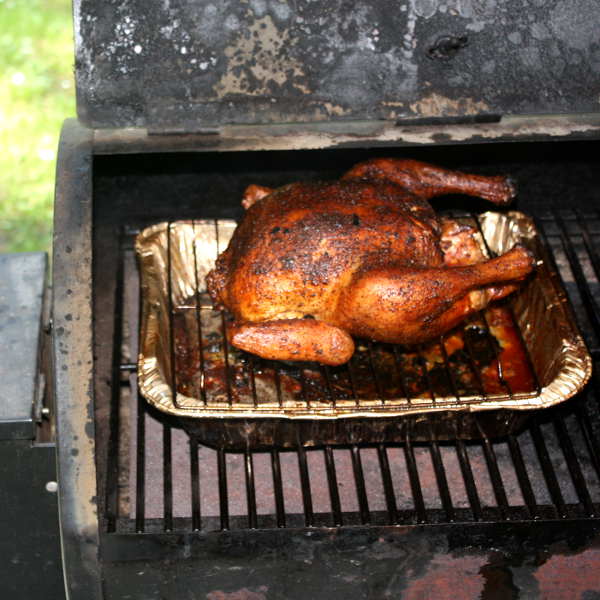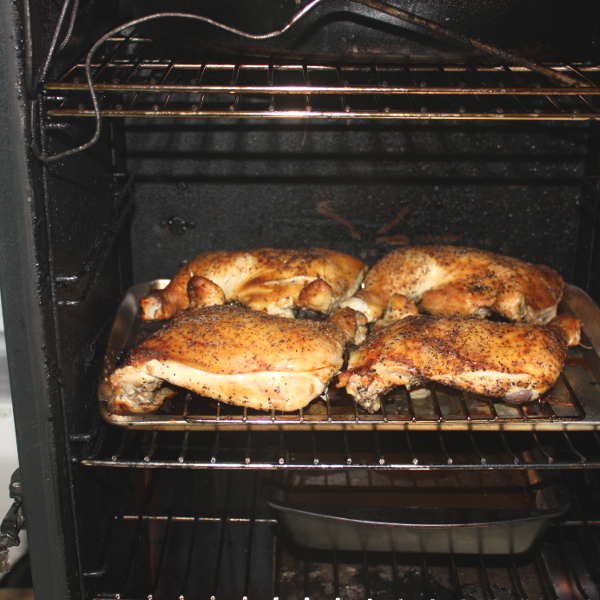Brining Chicken For Smoking - Brined Chicken Just Tastes Better!
Brining chicken before it's smoked goes a long way toward making your chicken taste better. If your smoked chicken isn't as plump and juicy as you'd like, brining is the answer!
It doesn't take much time, and depending on the method used, brining chicken can be an easy job. It's definitely worth the effort.
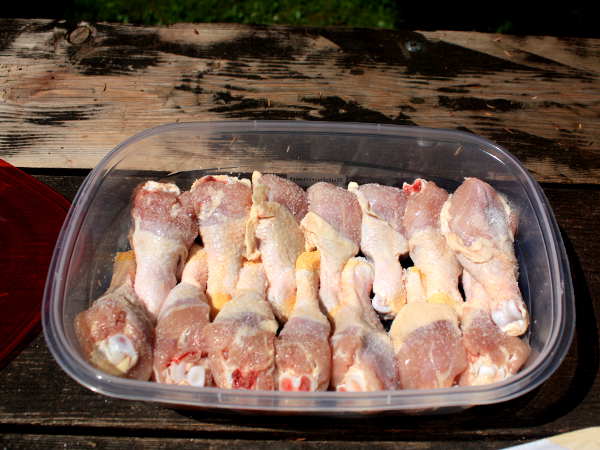 Dry Brining Chicken Legs
Dry Brining Chicken LegsThe Benefits of Brining Chicken
Have you ever bit into a piece of smoked chicken breast and found that it was dry and tasteless? I bet you had to grab your drink and take a quick swig just to get it down.
Overcooking white meat by just a few degrees causes the protein fibers to contract, which squeezes out the tasty juices. It also makes the meat tougher and gives it an unpleasant texture.
Dark meat is more forgiving when it's overcooked. The greater amount of collagen in legs and thighs is the reason, but there's still some loss of moisture and flavor.
Brine To The Rescue!
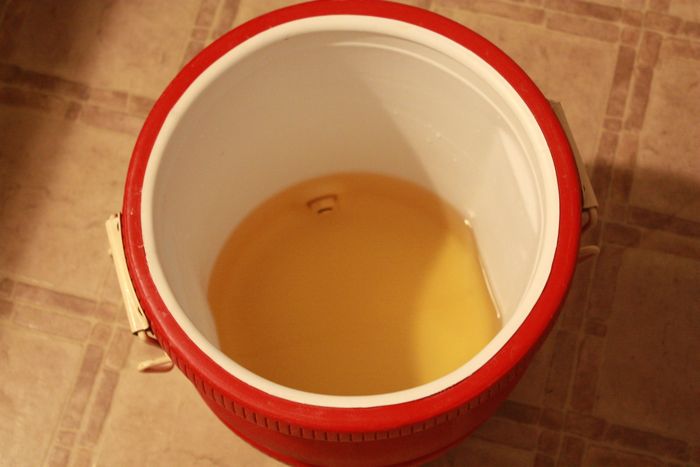 Fresh Chicken Brine
Fresh Chicken BrineBrining improves all parts of the chicken, but its magic is most evident with the breasts. When brined, the muscle fibers hang on to more moisture.
And that translates into more flavorful, tender meat. The dark-meated legs and thighs are plumper and more juicy, too. And tastier!
Methods of Brining Chicken
It comes down to two choices when you decide to brine your chicken: wet brining or dry brining. The names pretty much say it all, but without revealing the important details.
Using Wet Brine for Chicken
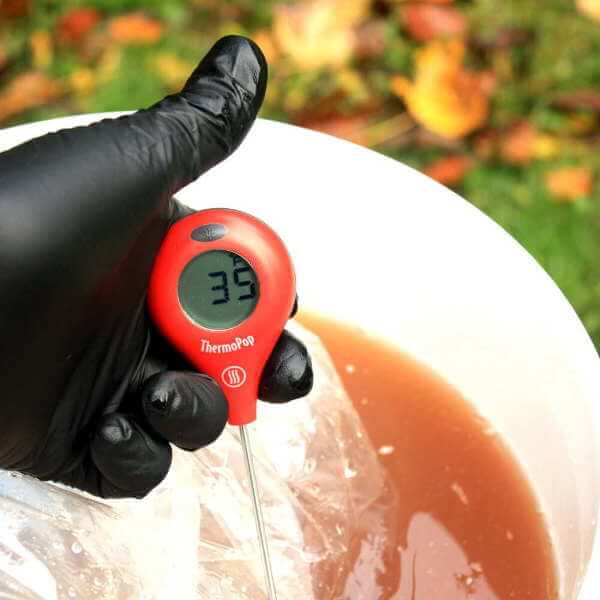
To wet brine chicken, measured amounts of salt and water are combined and the chicken is submerged under the surface. The amount of time the chicken is left in the brine is crucial.
If not soaked long enough, there will be only limited benefit. And if left in too long, the chicken will be too salty to eat.
Since there has to be plenty of liquid-brine around the chicken, an adequately sized container is needed. It has to be kept cold (between 36°F and 40°F) for the duration.
And for that you need space in a refrigerator. At times, this can be a problem.
In lieu of using a refrigerator, chicken can be brined in a bucket or cooler with a sealed contain of ice floating on the top.This will keep the brine at the perfect temperature - until the ice melts.
However, a frozen half-gallon milk jug of water will last several hours, which is plenty of time to brine even a whole chicken.
Never dump loose ice into the brine. It will become diluted and won't do what it's meant to do.
The Dry Brining Method
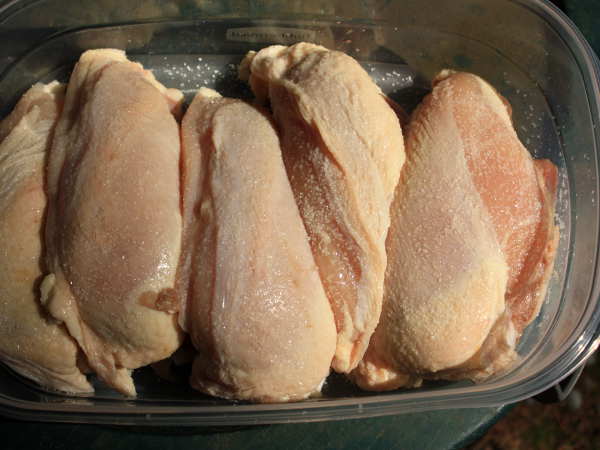 Brining Breasts With Kosher Salt
Brining Breasts With Kosher SaltDry brining chicken is easy. There's no worry that the chicken will be too salty if it's brined too long. And if it's dry brined for less that the optimal amount of time, there will still be some benefit.
Less space is required with this method, since you're not fooling around with liquid brine. Even if your fridge is packed with leftovers, some rearranging might create enough room.
The procedure is simple.
- Measure out the amount of salt you'd use to season the chicken right before cooking.
- Sprinkle the salt evenly over all sides of the chicken, whether it be legs, thighs, breasts or a whole chicken.
- Place the salted chicken in a sealed container or food storage bag.
- Refrigerate for the minimum time required.
When Dry Brining, Use One-Half Teaspoon of Kosher Salt Per Pound of Chicken
There's no chance of the chicken becoming too salty. And if brining time is shortchanged, the chicken won't be completely brined but it will be seasoned with the right amount of salt.
A Comparison of Dry and Wet Brining
Moistness and Flavor of Brined Chicken
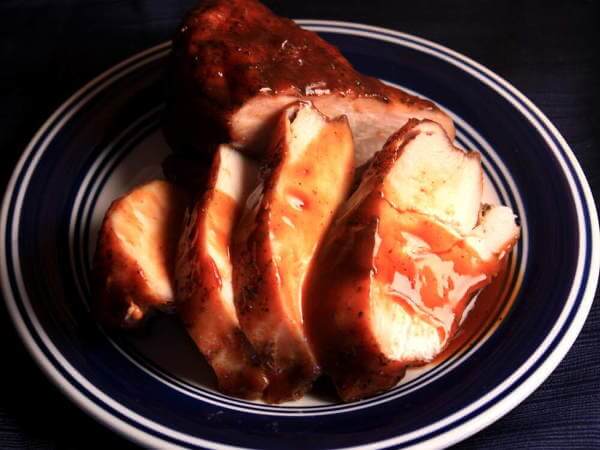 Brined, Smoked and Sliced Chicken Breast
Brined, Smoked and Sliced Chicken BreastI've found that when dry brined chicken is smoked, it's not quite as moist as chicken that's been wet brined. But the dry brined chicken seems to have a little more flavor.
When chicken is dry brined, a small amount of liquid is left in the bottom of the bag or storage container. Not much, but evidently it's enough to affect the juiciness of the cooked chicken. And enough to concentrate the chicken's flavor.
Wet brined chicken does lose some of its juice, proven by the fact that the brine becomes pinkish in color. But being surrounded by salty water, the chicken reabsorbs some liquid, possibly more than the amount lost. And that would account for the less intense flavor.
Ease of Brining
Hands down, dry brining is easier. It requires less space, much less salt, and there's no chance of the meat becoming over-salted. The meat will be moist, but not quite as juicy as a wet brined bird would be.
Wet brining requires larger containment, more refrigerator space, and a lot of salt - most of which is poured down the drain.
But if you prefer your chicken to be as plump and juicy as possible, wet brining is the way to go, even if the process has a few drawbacks.
Safety Tip! - Always Chill The Brine To 40°F or Less Before Dropping In The Chicken
Equipment Needed For Brining Chicken
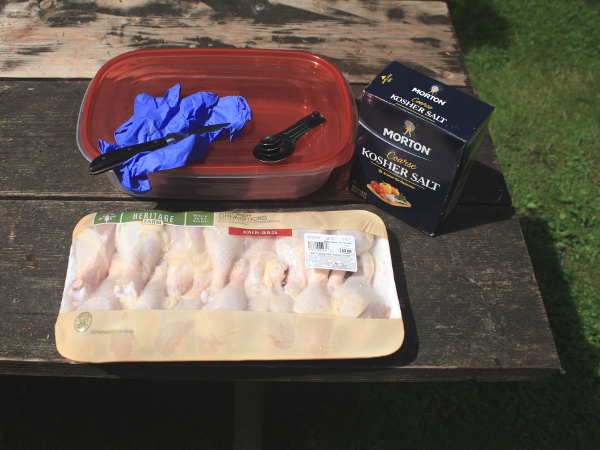 Ready to Brine!
Ready to Brine!For dry brining, the needs are few. With a little high quality salt and a food grade storage container of some type, whether Ziplock or TupperWare, ya got all ya need.
If you opt to wet brine, you'll need much more salt, up to one cup per gallon of brine made. If the water coming from your tap is questionable in quality, you might decide to buy a gallon or two of filtered drinking water to use.
A sturdy food grade container rounds out the list. A large container with a snap-on lid will work, as long as it fits the fridge.
For smaller amounts of chicken I've used good quality gallon size freezer bags. But I still place the bag in a large bowl, just in case of a leak.
Miscellaneous items include measuring spoons, gloves and a knife.
How Long to Brine Chicken Drumsticks, Thighs, Breasts and Whole Fryers
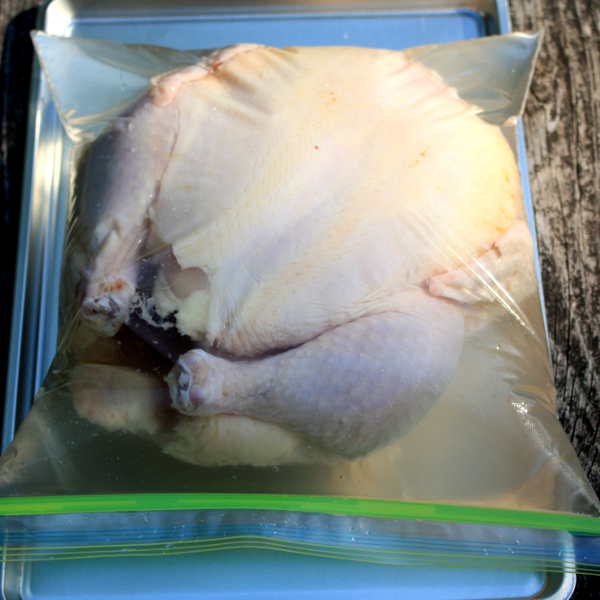 Brine Whole Chickens Four to Eight Hours
Brine Whole Chickens Four to Eight HoursLength of Time When Dry Brining
As I mentioned earlier, you don't have to worry about overdoing it when dry brining. Sometimes I'll leave the salted chicken in the fridge for a couple of days. I think that the longer brine period makes the chicken even better.
At minimum, smaller pieces of chicken like the legs (drumsticks), wings and thighs should rest for an hour before being seasoned and smoked. Give chicken breasts and leg quarters a little more time, about and hour and a half.
With whole chickens, two hours will do the trick. And don't forget to sprinkle some salt into the body cavity. It'll work its way from the inside out.
But if you're cooking spur-of-the-moment, don't fret. Just salt the chicken first thing, then do whatever prep work you gotta do - make the dry rub or sauce, light the charcoal, make the salad...
Even if it's salted for just ten minutes before hitting the smoker, some of the salinity will work its way into the meat. And you'll notice a difference.
Chicken Brining Time In a Bucket
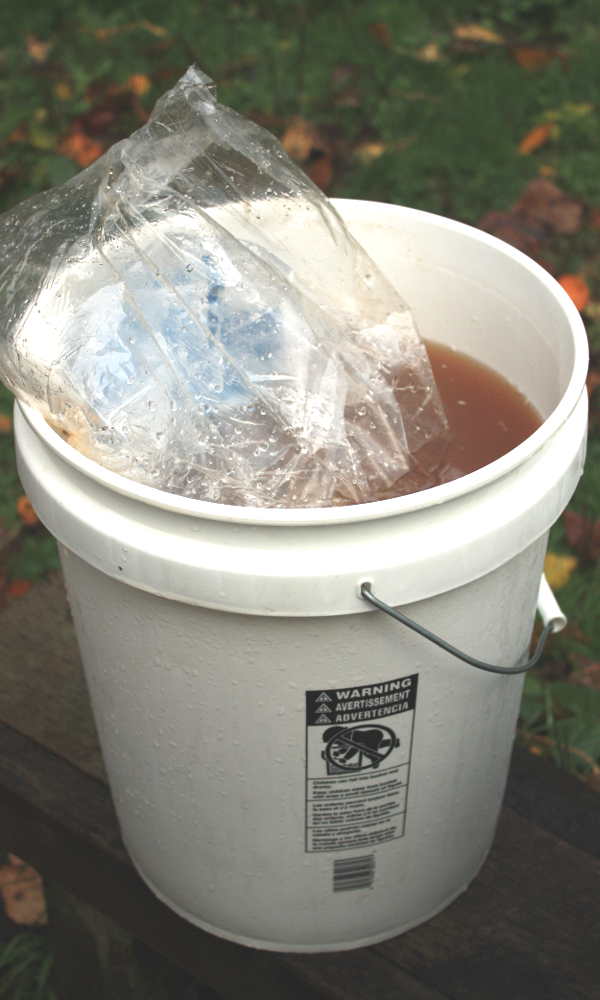 Sealed Bag of Ice Keeps Brine Cold
Sealed Bag of Ice Keeps Brine ColdThe amount of time to leave chicken in liquid brine depends on the concentration of the brine solution and the size of the pieces being brined.
Whole chickens take the most time, up to eight hours. Brining time for skinless drumsticks and wing sections can be as short as thirty minutes.
Chicken Brining - A Recap of Important Details
- Dry brining chicken is easier, but wet brined chicken is more juicy.
- Safe temperature of brine is 36°F - 40°F.
- Always refrigerate brining chicken, or keep cool with ice.
- How long to brine chicken depends on the brine's salt concentration and the size of the chicken.
- Use a good quality kosher, canning or pickling salt.
- Brining time can be from thirty minutes, up to eight full hours.
Try These Recipes With Brined Chicken
Great for a family meal, a smoked whole chicken is the perfect choice. Get the lowdown on how to smoke one of these beauties.
If your tastes lean more toward the dark side, smoky chicken leg quarters could be exactly what you need to satisfy that craving.
- You Are Here: Home >
- Tips >
- Brining Chicken

